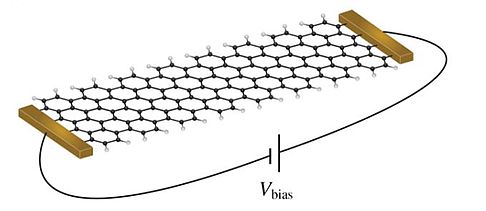
Computational Nanoscience - Summer Term 2021
Lecturer: Dr. Jan Wilhelm
Lectures (4 SWS)
The lecture follows the "flipped classroom" concept: Lecture notes will be available on Grips with a link inside to prerecorded Youtube videos of the lectures.
Zoom meeting: Thursday, 16:00 – 17:30 (first meeting: 15.04.2021, previous
self-study of the lecture material required).
Exercises (2 SWS)
The Zoom meeting on Thursday includes technical support on exercise sheets.
Lecture period: 12.04.2021 - 16.07.2021
Grips (including link to Zoom meeting and solutions to exercise sheets)
Summary
In the last decades, density functional theory (DFT) has become one of the most used simulation methods to describe the quantum mechanical behaviour of electrons in an electrostatic potential of ion cores and other electrons. Such a system is known to us as a material or matter, in general. With DFT and close relatives, various ground state and excited state properties of the electrons on the nanoscale can be computed, for example the atomic configuration of a molecule on a surface. This lecture offers a pedagogical presentation of the conceptual ideas underlying DFT and its close relatives (as Hartree-Fock, wavefunction correlation methods and GW). With these methods, it is possible to treat comparably large systems (up to thousands of atoms) enabling direct comparison to experiments in many areas. Applications to problems in nanoscience, solid-state physics and quantum chemistry will be discussed. In exercises, students apply state-of-the-art DFT packages to scientifically relevant examples.
Exercise sheets
Exercise sheets will be published weekly on this webpage. For participants, it is optional to hand in the exercise sheets.
Exercise sheet 1 - Discussion on: 29.04.2021
Exercise sheet 2 - Discussion on: 06.05.2021
Exercise sheet 3 - Discussion on: 20.05.2021
Exercise sheet 4 - Discussion on: 27.05.2021
Exercise sheet 5 - Discussion on: 10.06.2021
Exercise sheet 6 - Discussion on: 17.06.2021
Exercise sheet 7 - Discussion on: 24.06.2021
Exercise sheet 8 - Discussion on: 01.07.2021
Exercise sheet 9 - Discussion on: 08.07.2021
Exercise sheet 10 - Discussion on: 15.07.2021
Examination
Oral exam during the semester break (approx. 30 min, on lecture material and exercises, presumably two dates: 06 August 2021 and 24 September 2021).
The oral exam will cover the chapters 1.-14. (excluding DFT-based electron transport calculations) and Exercise Sheets 1.-8.
The lecture has 8 ECTS points, for further information see the module catalogue. Master students in Physics may have a look at the module description of Computational Physics, especially "13. Notes".
Outline
1. General information and content of the lecture
2. The many-electron problem
3. Computing properties from solutions of the many-electron problem
4. Analytical and qualitative theories for the many-electron ground state
5. Hartree-Fock method for the many-electron ground state
6. Wavefunction correlation methods for the many-electron ground state
7. Foundation of density functional theory for the many-electron ground state
8. Kohn-Sham DFT
9. Requirement on exchange-correlation functionals: Exact properties of DFT
10. Approximations to exchange-correlation functionals
11. Limitations of approximate exchange-correlation functionals
12. Potential energy surfaces from DFT
13. Non-zero temperature: Ensemble averages from DFT
14. GW approximation for quasiparticle energies
15. DFT-based electron transport calculations
Prerequisites
This course presumes good knowledge of quantum mechanics, e.g. from the course Quantum Theory I. In the exercises, elementary computer skills are required, see first exercise sheet. Prior experience in any kind of programming language is not needed.
Literature
• Lecture notes will be provided as pdf via Grips.
• R. Parr and W. Yang, Density-Functional Theory of Atoms and Molecules, International Series of Monographs on Chemistry. Oxford University Press (1994)
• F. Jensen, Introduction to Computational Chemistry, Wiley, 2nd edition (2007)
Illustrating Computational Nanoscience

Electron transport through a graphene nanoribbon.

Simulation of liquid water on a layer of hexagonal Boron Nitride on a metal surface.

